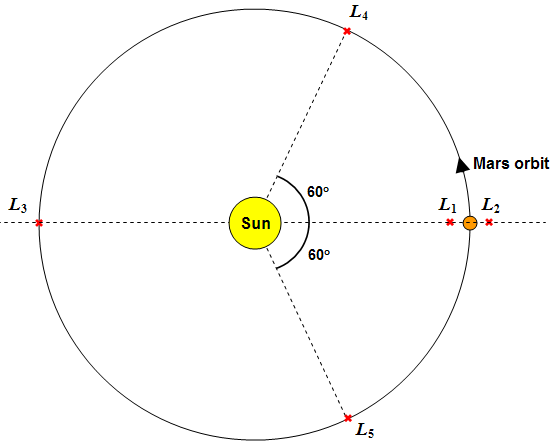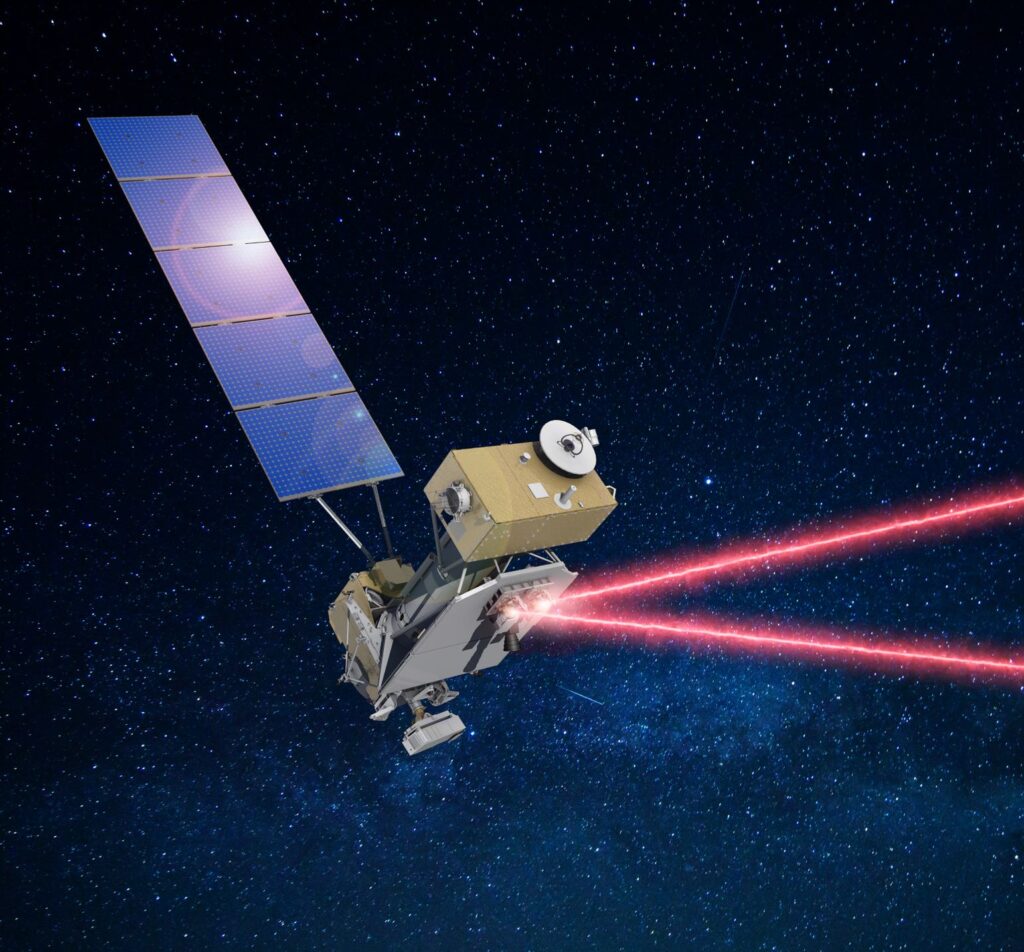Mars Lagrangian points
From the NASA Science page “Lagrange points are positions in space where objects sent there tend to stay put. At Lagrange points, the gravitational pull of two large masses precisely equals the centripetal force required for a small object to move with them. These points in space can be used by spacecraft to reduce fuel consumption needed to remain in position.”
The Earth/Moon and Earth/Sun systems have such points. Recently, the James Webb Telescope has made it’s way to the L2 position of the Earth/Sun system.
In the case of Mars, there are two stable points of interest. These are the L4 and L5 positions. These positions lead and trail Mars by 60 degrees respectively, as shown in the diagram below.
There are some asteroids in the L4 and L5 positions. In L4, there is “1999 UJ7”. More information here: https://en.wikipedia.org/wiki/(121514)_1999_UJ7 In the L5 position there are three asteroids. Information on them can be found here: 5261 Eureka

If a relay satellite were placed at these points, they could communicate with both Mars and the Earth more reliably with minimal blackouts. Even when Earth is on the opposite site of the Sun from Mars, the L4 and L5 relays could connect to the Mars probes.
The L1 and L2 are less stable points, though perhaps they could be exploited as well.
For the Mars Balloon Mission, earlier launch of relay satellites to the L4 and L5 could help to ensure that the data was transmitted regardless of orbital position.
NASA is currently investigating the use of laser based systems for communication. Such systems would allow for increased bandwidth as well as decreased power usage. More can be found here: LCRD

